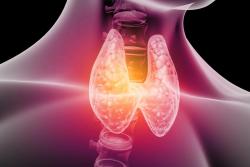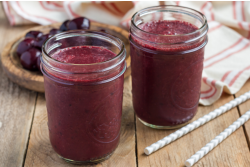With the reduction in daily sunlight exposure, and the higher risk of infection during the cooler months, it is essential that we work towards optimising our vitamin D status for immune and bone support in particular.
The bare minimum requirement for adequate vitamin D synthesis is sufficient daily exposure of our skin to sunlight. It therefore comes as no surprise that 25% of the UK population may be deficient, especially when you consider that we live in the northern hemisphere with heavily indoors-based lifestyles, particularly during the year 2020! It is therefore vital that we increase our daily intake of vitamin D over these cooler months to mitigate for our reduced ability to make enough of this nutrient at this time of the year.
Where do we get vitamin D from?
The main forms of vitamin D are ergocalciferol (vitamin D2) and cholecalciferol (vitamin D3). We get the former from plant sources such as mushrooms and tofu, and the latter from mainly animal sources such as eggs, dairy products, and oily fish (e.g. salmon, anchovies). When our bare skin is exposed to UVB rays from the sun of the correct wavelength, our skin converts 7-dehydrocholesterol into 25-hydroxyvitamin D (also known as calcidiol) which is eventually metabolised by the liver and kidneys into the active form, 1,25dihydroxyvitamin D (also known as calcitriol).
So why are we deficient in vitamin D?
Vitamin D deficiency is increasingly common, which is linked to an increased risk of immune4,5, and musculoskeletal dysfunction6. Nowadays, it mainly arises due to our lack of sunlight exposure, especially those with a sedentary indoor-based lifestyle (e.g. working in an office or from home) - which, let's face it, is most of us this year, along with a low intake through diet. There are also many other factors which can contribute to low vitamin D levels, including:
- Pregnancy and breastfeeding7
- Old age8
- Dark or covered skin9
- Obesity10
- Low magnesium status. Magnesium is needed to activate vitamin D, so if you’re running low, say from low dietary intake coupled with high stress levels, this could be impacting your vitamin D status.11
- Some of us also carry variants of the gene which codes for the Vitamin D Receptor (VDR), which can make it harder for vitamin D to bind to it and then carry out its multitude of different actions within cells.12
If any of the above factors are relevant to you, it is quite likely that your vitamin D level is sub-optimal and it would be worth increasing your vitamin D intake to help optimise your health. It's important to be prepared for the winter months when it comes to vitamin D!
The EU daily recommendation for vitamin D for an adult is 5µg (200 IU)13. This dosage often proves insufficient for most adults due to our exposure to at least some of the risk factors mentioned above. For this reason, 1000 IU is generally considered a more optimal daily dosage of vitamin D for an adult. When there is a demonstrated deficiency, individuals require higher doses and this is best guided by a health professional. It is worth noting that a vitamin D test, obtained either through the GP or privately (not expensive!), is the best way to find out what daily supplemental dosage of vitamin D is most suited to your needs.
Our Vitamin D range
We have a wide range of vitamin D products, so whether you’d like a liquid, a capsule, medium, or high strength, we have something for you!
Nutrisorb® Liquid BioMulsion® D (vegetarian)
This is our best-selling vitamin D product which provides a high daily dose of easily absorbed vitamin D3 in a liquid form which tastes great and is easy to take. One drop provides 1000iu vitamin D3. Even better, the vitamin D is emulsified, making it highly bioavailable and particularly beneficial with those struggling with digestive or absorption difficulties (e.g. related to gallbladder dysfunction or removal). The liquid is flavoured with a natural lemon oil and is pleasant to take under the tongue or can be added to water, juice, or smoothie. The bottle will last for several months, depending on how many drops you’re using, so it is very economical and can be shared with the whole family.
Directions: 1-3 drops per day directly under the tongue, with liquid or food, or higher as guided by a health professional.
Shop now
Vitamin D3 1000iu (vegan)
We are very happy to be able to provide a vegan vitamin D3 supplement. It provides vitamin D3 sourced from lichen, an innovative new raw material. Each capsule provides 1000 IU (25µg), making this a convenient option for everyday use and ideal for those who prefer a capsule or following a vegan diet.
Directions: 1 capsule per day with food, or higher as guided by a health professional.
Shop now
Vitamin D3 4000iu (vegan)
This is another vegan, capsule option, providing a higher strength support for those who need it. Delivering 4000iu of vitamin D3 per one capsule, it is an ideal option for those who want to supplement with a higher dose, are deficient, or have higher requirements for vitamin D, for example those with dark skin. irections
Directions: 1 capsule per day with food, or as recommended by a health professional.
Shop now
Nutrisorb® Vitamin D3 400iu (vegetarian)
This is a lower potency, liquid vitamin D3 option, providing 400 IU (10µg) per daily intake. This hypoallergenic liquid is designed for those who want to start 'low and slow' with their supplementation and offers flexible dosing options. This is perfect for sharing with the family, as it's suitable for all ages and has a palatable taste. Ideal for travelling or having in your bag for convenience since this product does not require refrigeration. For best use, take this directly under the tongue or add to your smoothie or yoghurt with breakfast. Provided in a glass bottle.
Directions: 4 drops per day directly under the tongue, ideally with food.
Shop now
Nutrisorb® D3 & K2 (vegan)
This is our standout liquid vitamin D3 and K2 product. It provides 1000 IU vitamin D3 alongside 75 mcg soya-free vitamin K2 as the preferred form, MK-7 (menaquinone). This hypoallergenic, single formula is especially suited to individuals who have difficulty swallowing tablets or capsules, digestive and absorption difficulties, and/or require therapeutic bone and immune support. Provided in a glass bottle.
Directions: 6 drops per day directly under the tongue with food, or higher as guided by a health professional.
Shop now
What about the kids?
Vitamin D is vital for the development of the immune system and strong bones and teeth. Optimising vitamin D is therefore a vital consideration for infants and children as well, to help give them the best start in life.
Baby Vitamin D Drops (vegetarian)
This is a gentle, hypoallergic vitamin D3 product which comes in an easy to use liquid form and is suitable from 1 month. Per 3 drops, it provides 300 IU (7.5 µg) vitamin D3. This dosage can be increased to 4 drops per day (400 IU) as required for optimal support, for instance if the baby is exclusively breastfed. This product can be consumed alongside a small amount of formula-milk, however be mindful of the amount of vitamin D provided by formula to avoid consuming too high a dose. If unsure, plese contact our Clinical Nutrition team to check.
Directions: 3-4 drops per day in water, juice, milk, or cool food, or higher as guided by a health professional.
Shop now
If you are concerned about your vitamin D status, or have a particular condition, we recommend that you contact a registered Nutritional Therapist for personalised guidance about vitamin D supplementation.
Got a question?
The brand you can talk to:
We have a team of Nutritionists at the end of our advice line, open to you, for product support and advice (5 days a week). 0121 433 8702 or clinicalnutrition@biocare.co.uk
Or head to our advice page.
Not registered for an account with BioCare®?
You can register now to receive up to date news, product information and exclusive offers whether you are a consumer, practitioner or retailer.
References
1 Department of Health. 2014. National Diet and Nutrition Survey: results from Years 1 to 4.
2 Erkkola et al. Maternal vitamin D intake during pregnancy is inversely associated with asthma and allergic rhinitis in 5-year-old children. Clin Exp Allergy. 2009; 39 (6): 875-82
3 Simpson et al. Latitude is significantly associated with the prevalence of multiple sclerosis: a meta-analysis. J Neurol Neurosurg Psychiatry. 2011; 82 (10): 1132-41.
4 National Institutes of Health (2011) Vitamin D. [Online] Available at: http://ods.od.nih.gov/factsheets/VitaminD-HealthProfessional/ [Accessed 2nd April 2014].
5 Hollis BW et al. Vitamin D Supplementation during pregnancy; Double-blind, Randomised Clinical Trial of Safety and Effectiveness. J Bone and Mineral Research. 2011; 26 (10): 2341-57
6 Lips P. Worldwide status of vitamin D nutrition. Journal of Steroid Biochemistry and Molecular Biology, 2010; 121 (1-2): 297-300
7 Hatun S et al. 2005. Subclinical vitamin D is increased in adolescent girls who wear concealing clothing. J Nutr 135 (2):218-22
8 Carrelli A et al. J Bone Miner Res. 2017. Vitamin D storage in Adipose Tissue of obese and normal weight women. 32 (2): 237-242
9 Uwitonze AM, Razzaque MS. 2018. Role of Magnesium in Vitamin D Activation and Function J Am Osteopath Assoc. 118 (3): 181-189
10 Tizaoui K et al. Lung. 2014 Association of vitamin D receptor gene polymorphisms with asthma risk: systematic review and updated meta-analysis of case-control studies; 192 (6): 955-65
11 O’Connor A, Benelam B. An update on UK Vitamin D intakes and status, and issues for food fortification and supplementation. Nutrition Bulletin. 2011; 36: 390-6.











